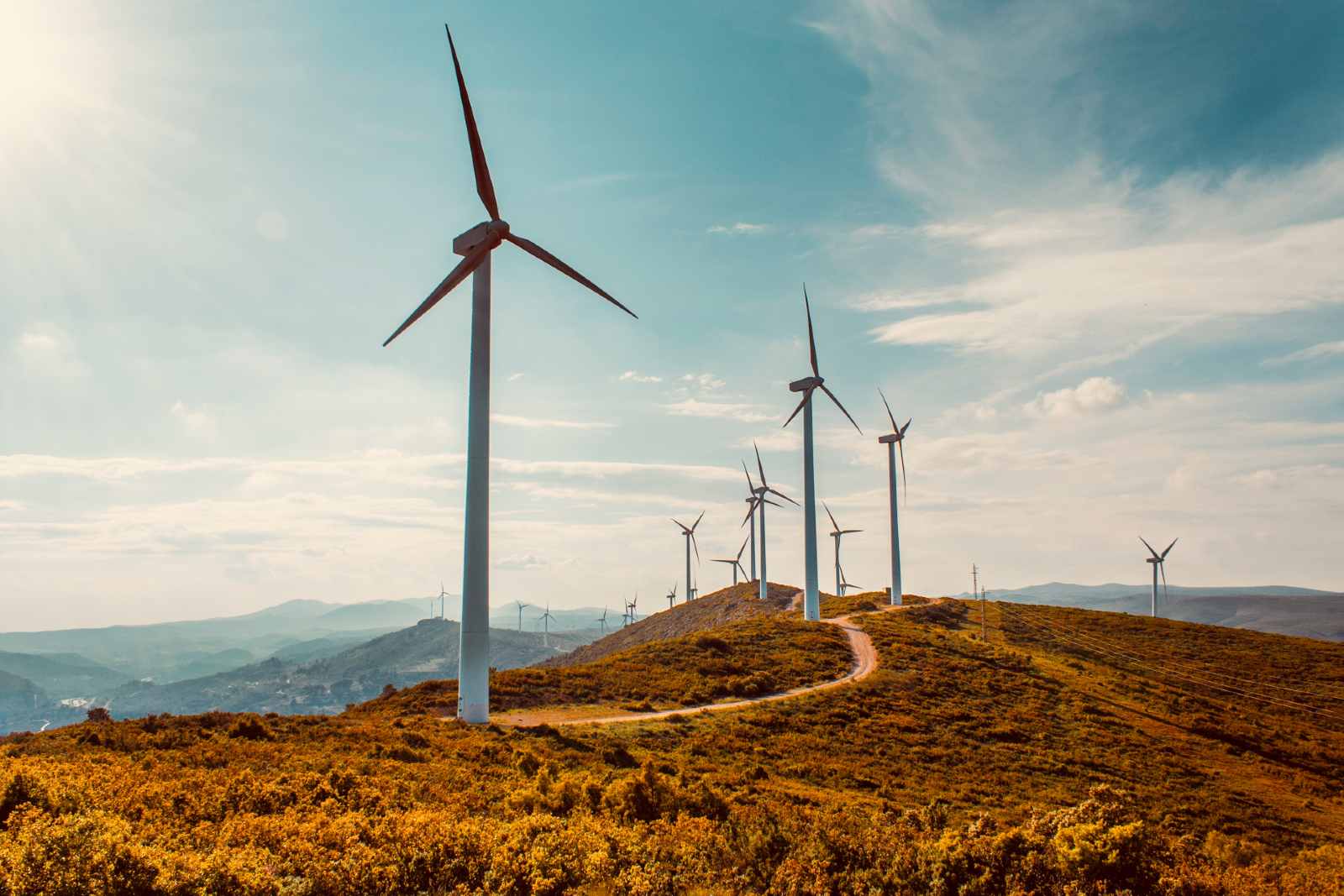
The green economy in 2021: Part I – New ambitions amid supply chain woes

The green economy in 2021- Part I: Egypt’s shift towards greener energy sources accelerated, but global price increases and supply chain disruptions put the brakes on. 2021 saw Egypt renew its commitment to using greener forms of energy generation, signing off on several big renewables projects, kickstarting its initiative to convert thousands of vehicles to run on natural gas, and moving forward with plans to locally produce electric vehicles. But government and private sector efforts to spur the energy shift were somewhat curtailed by supply chain disruptions and the soaring cost of essential materials.
Throughout the year, our renewable energy ambitions and production increased: The government announced in November that it wants 42% of our electricity to come from renewable sources by 2030 — accelerating our clean energy transition by five years, and marking a substantial increase from our current 10%. Renewable energy production from the New and Renewable Energy Authority’s (NREA) projects had increased over 22% y-o-y in FY2020-2021 (which ends in June 2021) reaching c. 4.5k megawatts / hour.
…If not installed capacity: As far as capacity is concerned we don’t appear to have gained much. The International Renewable Energy Agency (Irena) estimated that we had 5.97 GW at the end of 2020. As of October, we are at 6.11 GW of installed capacity, according to most recent estimates by NREA (pdf). We’ll have to wait until NREA’s next results come out in January to see precisely where we are at now. It is, however, worth noting that the US government had forecast a few months ago that we’ll have 6.34 GW at the end of this year.
And plenty of green energy funding came our way: Funding for the green economy was expected to exceed 40% of the EBRD’s planned EUR 1 bn pipeline of Egypt 2021 investments, Heike Harmgart, EBRD managing director for the Southern and Eastern Mediterranean, told Enterprise in May. 2021 funding included an EBRD-led USD 114 mn package to finance ACWA Power’s new 200 MW Kom Ombo solar plant, and an EUR 83 mn African Development Bank (AfDB) loan to support energy efficiency.
Wind projects started having their moment in the sun: A consortium made up of Orascom Construction (OC), Japan’s Toyota Tsusho Corporation/Eurus Energy Holdings Corporation, and France’s Engie signed contracts to develop, construct, and operate a 500 MW Ras Ghareb wind farm back in October (pdf). Meanwhile, Actis-backed Lekela Power inaugurated its 250 MW wind farm in West Bakr last month, with the USD 350 mn project expected to increase Egypt’s wind energy capacity by 18%, while Al Nowais is moving forward with a 500 MW wind farm in Ras Ghareb. Meanwhile, a consortium made up of ACWA Power and Hassan Allam Holding plans to replace a gas-powered combined-cycle power plant in Luxor for a 1.1 GW wind farm after the Madbouly Cabinet approved the move in the summer.
Solar projects were relatively small-scale — but interest remained steady: Notable projects include Emirati firm Al Nowais’ subsidiary AMEA Power more than doubling the capacity of its planned Kom Ombo solar PV plant size, to 500 MW from 200 MW back in 2020. Qalaa Holdings’ Taqa Arabia is also looking to increase its solar energy capacity to 400-500 MW within five years, a 6x increase from 70 MW currently, Qalaa Holdings’ chairman Ahmed Heikal said back in October. Contracts to set up a EUR 38 mn, 50 MW solar power plant in Zaafarana by mid-2022 were inked between a consortium led by Germany’s Belectric and the NREA.
Green hydrogen also generated excitement: 2021 was the year we started hearing serious talk about green hydrogen in Egypt. In July, President Abdel Fattah El Sisi issued a directive to establish Egypt’s green hydrogen strategy, with a view to launching an initial phase of projects that could be worth USD 3-4 bn. Back in November, Orascom Construction announced that it is joining a developer consortium of Norway’s Scatec, Nassif Sawiris-backed Fertiglobe, and the Sovereign Fund of Egypt to build the 100 MW green hydrogen plant in Ain Sokhna, with the facility expected to come online by 2024.
Egypt is also exploring carbon capture technology, with the government looking to line up a carbon capture agreement with Eni — Egypt’s first. Earlier this month, representatives of Mitsubishi discussed working with the Oil Ministry on carbon capture and green hydrogen and during talks with Minister Tarek El Molla.
And funds started flowing into desalination: The Sovereign Fund of Egypt (SFE) announced a USD 2.5 bn plan to quadruple our desalination capacity in the next five years, and issued tenders in October for private companies to build 17 solar-powered desalination plants. In June, Orascom Construction and Metito successfully delivered a USD 130 mn seawater desalination plant in East Port Said. And KarmWater, the newly-launched water solutions division of local solar power developer KarmSolar, is running a solar-powered water desalination project in Marsa Alam (pdf).
But amid financing challenges, some sectors — like much-touted waste-to-energy (WtE) — struggled to get off the ground: Overall, little progress was made attracting investment for WtE projects. Egypt did launch its first WtE plant, but several companies told Enterprise that structural problems — including a feed-in tariff which they argue is too low at EGP 1.4/Kwh — mean widespread WtE investment isn’t financially viable.
And though our natgas transition scheme got going, it’s been hit by supply shortages: The government’s ambitious plan to switch passenger cars to run on natgas got underway in 2021, with almost 7.7k natgas-run cars given out as of October. But some dual-fuel vehicles will be EGP 3-5k more expensive after the Finance Ministry approved three manufacturers’ requests to raise their prices. This came off the back of the global supply chain crunch which led to a hike in shipment costs, and delays of chips and other car components.
Cost increases of imported materials also impacted our local EV production plans: Negotiations between state-owned El Nasr Automotive and China’s Dongfeng — who had signed an agreement in January to locally assemble E70s — broke down in November, reportedly largely due to the rising cost of imported materials. Prior to the collapse, El Nasr was aiming to have the first 100 E70 vehicles ready by July-August 2022.
Though they’re still moving forward: El Nasr anticipated having a new partner by the end of November, Managing Director Hany El Kholy told Enterprise. Renewable energy industry leader Infinity was continuing with plans to work with the government to set up 6k electric vehicle charging points, across 3k charging stations nationwide over the next three years, Managing Director of Infinity EV Shams Abdel Ghaffar said. And state-owned Engineering Automotive Manufacturing Company signed a cooperation agreement with private Egyptian tech firm BrightSkies to manufacture key components for Egypt’s first locally-assembled electric microbuses.
With plans for all-private sector manufacturing being discussed: General Motors and Al Mansour Automotive could partner up to produce electric vehicles in Egypt under a memorandum of understanding signed by the two companies earlier this month. The companies will assess production requirements, sales volumes, and the incentives that are on offer, and will produce a study to put to the government within the next 2-3 months, he said.
The commodities boom and supply chain disruptions hurt renewables, particularly solar: With aluminum and copper prices rising throughout the year, local solar producers were hit particularly hard by the start of a new commodities supercycle. To cope, they had to increase their prices, delay projects, or absorb the costs and accept squeezed margins.
And even some of our biggest projects may be delayed as a result: In September, both ACWA Power and Al Nowais reportedly asked the Electricity Ministry to extend their project implementation timelines “until prices settle down,” according to NREA Deputy Director Ehab Ismail, who said rising shipping costs and an increase in the prices of solar cells were putting them over budget. The local press had reported that ACWA sought to postpone work on its 200 MW Kom Ombo solar plant by nine months and Al Nowais wanted to extend fundraising for its solar power projects by six months, until June 2022. Al Nowais had also been reportedly looking to sell its license in Benban in order to fund other projects.
EDITOR’S NOTE: This story was amended on 17 January, 2021 to reflect that Engineering Automotive Manufacturing Company (EAMCO) is no longer a subsidiary of El Nasr Automotive.
Your top climate stories for the week:
- Mitsubishi interested in Egypt green hydro projects? Representatives of the Japanese firm discussed working with the Oil Ministry on clean energy projects such as green hydrogen and carbon capture.
- Natgas transition: State-owned companies Cargas and Gastec inked two contracts worth EGP 200 mn to finance the national program to convert cars to run on natural gas.
Enterprise is a daily publication of Enterprise Ventures LLC, an Egyptian limited liability company (commercial register 83594), and a subsidiary of Inktank Communications. Summaries are intended for guidance only and are provided on an as-is basis; kindly refer to the source article in its original language prior to undertaking any action. Neither Enterprise Ventures nor its staff assume any responsibility or liability for the accuracy of the information contained in this publication, whether in the form of summaries or analysis. © 2022 Enterprise Ventures LLC.
Enterprise is available without charge thanks to the generous support of HSBC Egypt (tax ID: 204-901-715), the leading corporate and retail lender in Egypt; EFG Hermes (tax ID: 200-178-385), the leading financial services corporation in frontier emerging markets; SODIC (tax ID: 212-168-002), a leading Egyptian real estate developer; SomaBay (tax ID: 204-903-300), our Red Sea holiday partner; Infinity (tax ID: 474-939-359), the ultimate way to power cities, industries, and homes directly from nature right here in Egypt; CIRA (tax ID: 200-069-608), the leading providers of K-12 and higher level education in Egypt; Orascom Construction (tax ID: 229-988-806), the leading construction and engineering company building infrastructure in Egypt and abroad; Moharram & Partners (tax ID: 616-112-459), the leading public policy and government affairs partner; Palm Hills Developments (tax ID: 432-737-014), a leading developer of commercial and residential properties; Mashreq (tax ID: 204-898-862), the MENA region’s leading homegrown personal and digital bank; Industrial Development Group (IDG) (tax ID:266-965-253), the leading builder of industrial parks in Egypt; Hassan Allam Properties (tax ID: 553-096-567), one of Egypt’s most prominent and leading builders; and Saleh, Barsoum & Abdel Aziz (tax ID: 220-002-827), the leading audit, tax and accounting firm in Egypt.